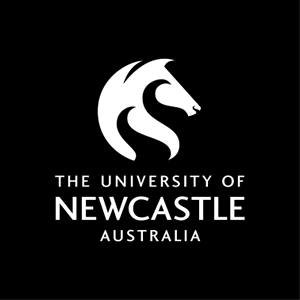NIF’s capabilities grow with new Nodes
The National Imaging Facility’s (NIF) capabilities are expanding with three leading research institutions joining the national network, La Trobe University’s school of Cancer Medicine, the Olivia Newton-John Cancer Research Institute (ONJCRI), Macquarie University, and the University of Newcastle and the Hunter Medical Research Institute (HMRI) Imaging Centre.
The new nodes will further diversify NIF’s network to include research capability and training in rural and remote communities and Aboriginal and Torres Strait Islander Communities and cutting-edge molecular imaging for treating cancer and cognitive decline. The NIF network will grow from 10 national nodes to 13 across Australia and will strengthen research expertise in dementia, brain concussion imaging, cancer biology, neurodegenerative diseases, molecular imaging probes for cancer, and drug development.
NIF’s first regional node, located in Newcastle is a joint partnership with the HMRI Imaging Centre and the University of Newcastle, and will provide direct links with regional and rural communities, facilitated through the University’s established regional research engagement programs, improving health research outcomes in remote and vulnerable populations and support Aboriginal communities whose health priorities include deafness, renal disease, and neurodegenerative disorders.
“The HMRI Imaging Centre is delighted to be joining NIF. We deliver important translational imaging research for the wider Hunter region and bridge the gap between urban, regional and rural communities. The facility is an international leader in human foetal imaging and spectroscopy and supports flagship translational projects in cancer, dementia, psychosis, inflammatory diseases and cardiorespiratory disease” said Professor Michael Breakspear, Node Co-director from the University of Newcastle and the HMRI Imaging Centre.
Associate Professor Saad Ramadan, Node Co-director from the University of Newcastle and the HMRI Imaging Centre, said the centre facilitates fundamental discovery research and technical developments in sequence optimization and implementation and its partnership with the University of Newcastle, Hunter New England Local Health District (HNELHD) and NSW Regional Health Partners. The facility supports multiple institutional, community and industrial partners including Corvia Medical Inc. and Australian Cardiovascular Alliance (ACvA).
The new Macquarie University Node provides national access to pre-clinical medical and research imaging capabilities within MQ Health and has a full biomedical imaging suite including (x-ray, CT, MRI, PET) located within Macquarie University Hospital (MUH); and magnetoencephalography (MEG) and related electrophysiological recording technologies located within the Australian Hearing Hub. The new NIF node has the only paediatric MEG facility in Australia and is one of only two in the country.
Macquarie University’s Professor of Radiology, John Magnussen said the facility supports studies of children who have developmental disorders and has integrated radiology and molecular imaging facilities that allows for time critical clinical research to inform and improve patient recovery from Traumatic Brain Injury (TBI).
“This environment allows access to high-quality imaging techniques and datasets with relevant clinical information and supports dementia brain imaging that will inform a national framework for concussion imaging and capacity for pharma-sponsored clinical trials. There are more than 100 actives trials, which give broad access to the community and researchers and we are thrilled to be part of NIF providing open access to imaging expertise,” Professor Magnussen said.
La Trobe’s University’s School of Cancer Medicine, ONJCRI is at the frontier of cancer medicine, with over 200 ongoing clinical trials, providing patients with access to experimental and breakthrough treatments including immunotherapies, targeted therapies and personalised medicine.
The new La Trobe-ONJCRI node will provide an integrated molecular imaging program that extends from laboratory research, including biology, chemistry, biotechnology, through to novel probe radiochemistry and validation in animal imaging (PET and MRI) prior to human trials.
Professor Andrew Scott AM, Director of the La Trobe-ONJCRI node said “We are excited to be joining NIF. This exciting partnership and the installation of a preclinical PET/3T MRI scanner in a dedicated imaging suite within our facility will enable ongoing and enhanced basic and translational research to be performed, linked to our world-class radiochemistry and human PET facilities on site. With the increased capacity we look forward to further collaborations with academia, Pharma and Biotech to facilitate research, drug development and clinical studies”.
NIF’s Chief Executive Officer, Professor Wojtek James Goscinski said NIF is excited to welcome three outstanding facilities to our network which will provide Australian researchers with access to a range of unique instruments across three new sites, and Australia’s network of applied imaging expertise, with this addition, National Imaging Facility capabilities span 14 sites.
“I’d like to welcome the three nodes and their international imaging research leaders to the NIF network – their extensive and diverse research capability and expertise will improve Australians’ access to better healthcare, foster socio-economic equity for rural and remote communities and inform our global imaging communities on world-class research in dementia, brain and concussion imaging, cancer biology and drug development”.
National Imaging Facility is funded by the Australian Government, under the National Collaborative Research Infrastructure Strategy (NCRIS), State Governments, and its partners.
[/tatsu_text][/tatsu_column][/tatsu_row][/tatsu_section]








